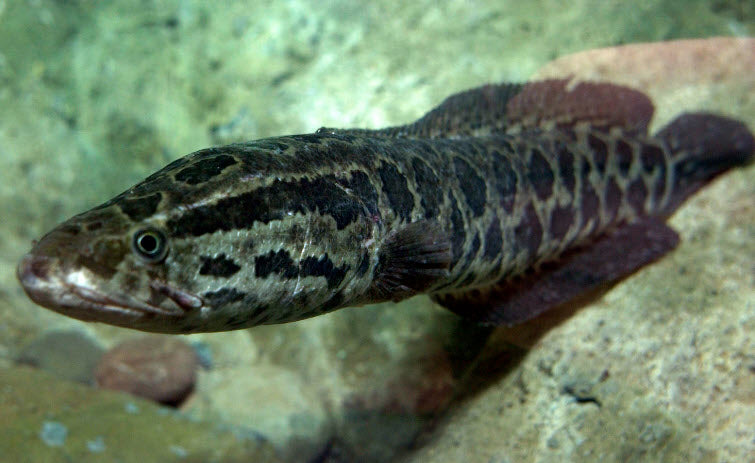
Northern Snakehead
Share
The Northern Snakehead (Channa argus) is an aggressive, invasive fish species that has garnered significant attention from anglers and environmentalists alike. Native to parts of China, Russia, and Korea, this predatory fish has established itself in various water bodies across North America, posing a possible threat to local ecosystems.
Identification
Northern Snakeheads are easily identifiable by their elongated bodies, sharp teeth, and long dorsal fins. They can grow up to 3 feet in length and weigh over 15 pounds. Their coloration ranges from light brown to a dark, mottled pattern, resembling a snake, which is how they got their name.
Habitat and Behavior
Northern Snakeheads thrive in freshwater environments such as ponds, lakes, rivers, and swamps. They are highly adaptable and can survive in low-oxygen environments by breathing air, thanks to their unique labyrinth organ. This adaptability allows them to colonize new areas rapidly, outcompeting native species for resources.
Ecological Impact
The introduction of Northern Snakeheads to non-native waters has led to significant ecological concerns. Their voracious appetite and aggressive nature disrupt local fish populations, leading to a decline in biodiversity. They primarily feed on fish, but their diet can also include crustaceans, amphibians, and even small mammals.
Fishing for Northern Snakehead
Fishing for Northern Snakehead has become popular among anglers due to their challenging fight and the thrill of targeting an invasive species. Effective lures for catching Northern Snakehead include topwater frogs, spinnerbaits, and soft plastic baits. Early morning and late evening are the best times to fish for them, as they are most active during these periods.
Controlling the Invasion
Efforts to control the spread of Northern Snakeheads involve public awareness, monitoring, and active removal. Anglers are encouraged to report any sightings to local wildlife authorities and refrain from releasing captured snakeheads back into the wild. Additionally, targeted fishing tournaments and bounty programs are implemented in some regions to mitigate their impact.
Conclusion
Understanding the Northern Snakehead's characteristics, habitat, and impact on local ecosystems is crucial for managing its presence in non-native waters. By promoting responsible fishing practices and increasing awareness, we can help protect our waterways from this invasive predator.
